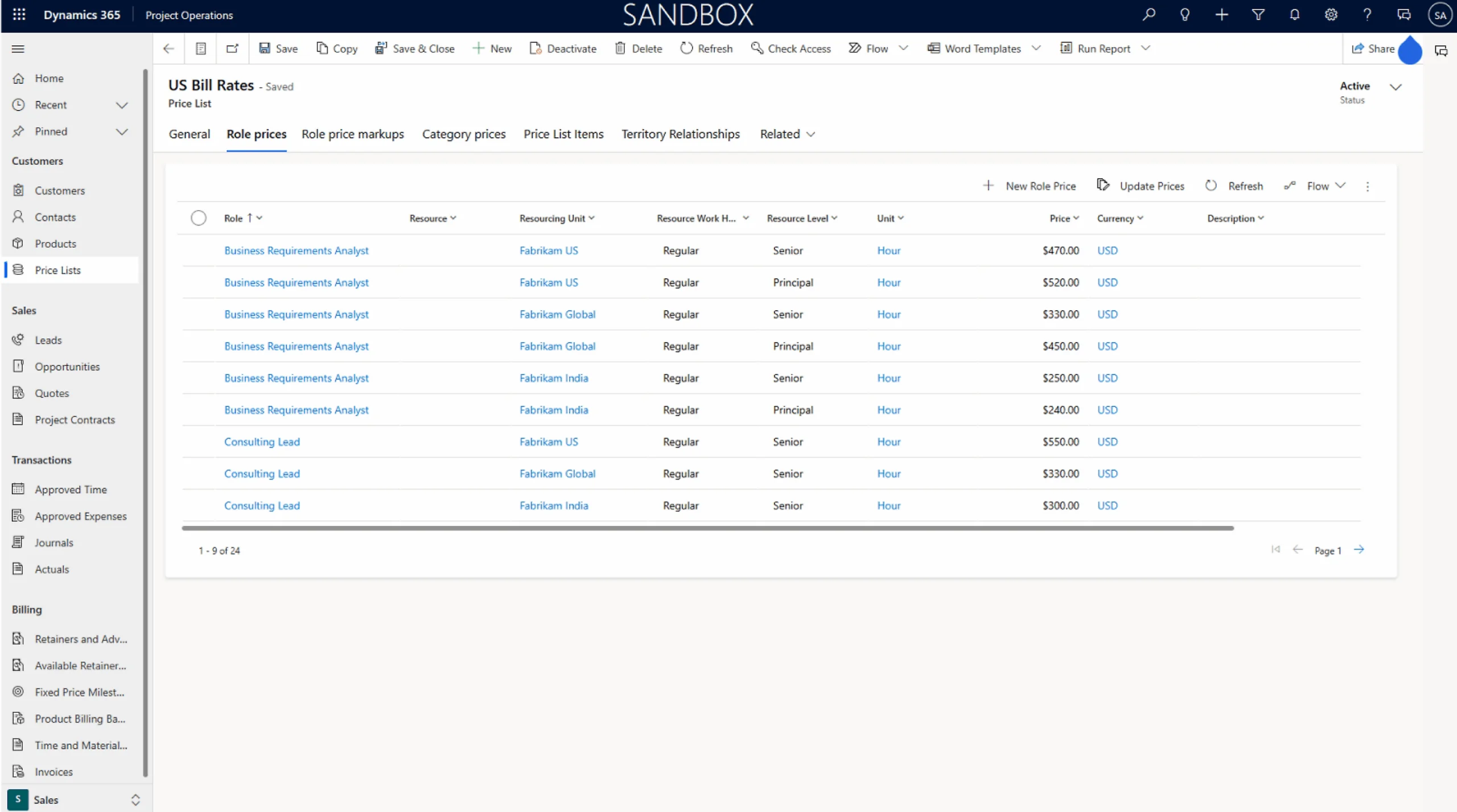Why Growing Businesses Switch to Dynamics 365 for Project Operations?
Table of Contents
Introduction
Many organizations switch to Dynamics 365 for Project Operations when fragmented tools and manual processes can no longer support growth. The platform unifies project planning, resource management, financials, and collaboration in one connected system. With recent updates like Copilot for time and expense entry, modern architecture for scalability, and integration with Finance and Power BI, Dynamics 365 delivers the automation, visibility, and control that businesses need to run projects more efficiently.

Why Businesses Switch to Dynamics 365 for Project Operations
Scalability and Flexibility:
Growing businesses often outgrow legacy tools that can’t handle complex project structures. Dynamics 365 Project Operations supports larger work breakdown structures (WBS), dependencies, and templates, making it easier to manage enterprise-level projects without system slowdowns. Its modern architecture ensures the platform adapts as your organization grows.
AI and Copilot-Driven Productivity:
Companies switch because manual processes waste time. With Copilot, Project Operations now:
- Speeds up time and expense entry (GA September 2025).
- Drafts project status reports automatically.
- Matches credit card transactions and creates itemized expenses.
This AI integration reduces administrative workload and allows teams to focus on value delivery.
See Project Operations in Action
Discover how AlphaBOLD can help you streamline planning, financials, and delivery with Dynamics 365 Project Operations.
Get Expert HelpUnified Financial Management:
Traditional tools often require separate systems for project financials. Dynamics 365 brings everything together by:
- Enabling revenue recognition at the contract line level.
- Supporting discounts, fees, and on-account transactions.
- Processing high-volume invoices asynchronously.
- Offering general journals for resource projects.
This unification ensures real-time visibility into budgets, forecasts, and profitability.
Smooth Transition from Legacy Tools
Many organizations are still on Project Management and Accounting (PMA) or third-party platforms. Microsoft continues to release migration paths into the modern architecture of Project Operations. This reduces risk, smoothing the transition, and ensures businesses benefit from the latest features without disruption.
Seamless Collaboration Across Teams:
Fragmented communication is a top reason companies switch. Project Operations integrates with Microsoft Teams, SharePoint, and Power BI, so teams can share updates, manage documents, and view dashboards in one place. This reduces miscommunication and improves accountability across departments.
Industry Insights: Data-Backed Reasons to Switch
- Widespread adoption of project management software
In 2025, 82% of organizations use project management software to drive efficiency and streamline operations. This reflects the importance of integrated platforms for staying competitive. - Market growth signals strong demand
The global project management software market is valued at $7.24 billion in 2025 and is projected to reach $12.02 billion by 2030, growing at a CAGR of 10.67%. Businesses are clearly investing in scalable solutions that can evolve with their needs. - Link between software and performance
Research shows that 77% of high-performing projects rely on project management software, and teams using these tools save an average of 498 hours per year. This demonstrates measurable efficiency gains from adoption. - AI is reshaping project delivery
The AI in project management market is forecasted to grow from $3.08 billion in 2024 to $7.4 billion by 2029, with a CAGR of nearly 20%. Forward-looking organizations are already preparing to integrate AI into project workflows.
These figures confirm that the decision to switch to Dynamics 365 for Project Operations is supported by market trends and measurable business outcomes, from efficiency gains to AI-driven transformation.
Transform Your Project Delivery
See how Dynamics 365 Project Operations with AlphaBOLD can simplify project planning, reporting, and financial management.
Request a DemoWhat New Features Make the Switch Easier in 2025?
Microsoft has continued to expand Dynamics 365 Project Operations with features that make adoption smoother and more impactful:
Copilot capabilities
Available from September 2025, Copilot simplifies time and expense entry, automates approvals, and drafts project status reports. These AI-powered tools reduce manual effort and speed up reporting cycles.Time Entry Mobile App and Calendar interface
Employees can now log time through a dedicated mobile app or use a calendar-style interface. These options improve user adoption by making time tracking faster and more intuitive.Financial enhancements
Recent updates include asynchronous invoice posting for high-volume projects, revenue recognition by contract line, and support for discounts and fees. Together, these features strengthen financial control and accuracy.WBS templates and copy tools
Project managers can create reusable templates or copy external project schedules, reducing setup time and ensuring consistency across engagements.Migration to modern architecture
Microsoft continues to provide migration paths for organizations moving from Project Management and Accounting (PMA). The modern architecture improves scalability, performance, and alignment with other Dynamics 365 applications.Advanced forecasting and reporting
With integration into Power BI and Microsoft Fabric, businesses gain deeper insight into project health, costs, and resource utilization, enabling more informed decision-making.
These updates demonstrate why businesses are choosing to switch to Dynamics 365 for Project Operations now. The platform combines AI-driven productivity, robust financial tools, and scalable architecture, making the transition more seamless than ever.
FAQs: Switching to Dynamics 365 Project Operations
Microsoft provides migration paths into the modern architecture of Project Operations, with ongoing feature parity updates. Most PMA capabilities will be supported by September 2025, making it easier for organizations to move without losing critical functionality.
Project Operations connects directly to Power BI and Microsoft Fabric, enabling real-time dashboards for project costs, utilization, and forecasting. This integration is a major reason businesses switch, as it eliminates the need for third-party reporting tools.
As of September 2025, Copilot supports conversational time and expense entry, automated approvals, and draft project status reports. Microsoft has also announced upcoming credit card auto-match and itemization features for 2026.
With the 2025 updates, the platform supports larger WBS structures, reusable templates, and copy tools for externally scheduled projects. This scalability ensures that even enterprise-level initiatives can be managed efficiently.
Key updates include asynchronous invoice posting for high-volume projects, revenue recognition at the contract line level, and support for discounts and fees. These changes give finance teams more control and accuracy in billing.
Plan Your Switch with Confidence
Explore a guided demo of Dynamics 365 Project Operations and learn how AlphaBOLD ensures a smooth transition from legacy systems.
Request a DemoHow to Switch Smoothly With a Trusted Partner
Moving to Dynamics 365 Project Operations is most effective when approached as a business transformation, not just a software change. These steps help ensure a smooth transition:
- Assess current tools to identify gaps in PMA, spreadsheets, or third-party systems.
- Plan a phased roadmap aligned with Microsoft’s modern architecture updates.
- Prepare users with training on Copilot, mobile time entry, and Power BI reporting.
- Leverage integrations with Finance, Teams, and Power BI for unified workflows.
- Engage a consulting partner to manage migration risks and tailor the system to business needs.
With the right approach, organizations can switch confidently and realize value quickly.
Conclusion
The decision to switch to Dynamics 365 Project Operations is driven by the need for efficiency, scalability, and AI-powered project management. With new features like Copilot, modern architecture, and deeper financial controls, the platform provides a future-ready foundation for complex projects. Working with the right partner ensures a smooth transition and faster results.
Request a Demo
Talk to our experts to explore how Dynamics 365 Project Operations can streamline your project delivery and financial management.
Explore Recent Blog Posts








